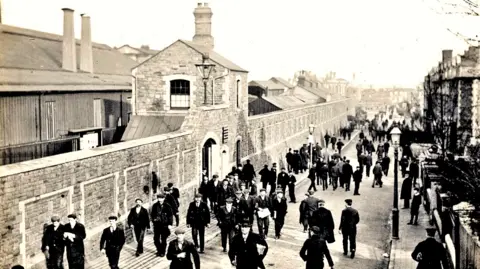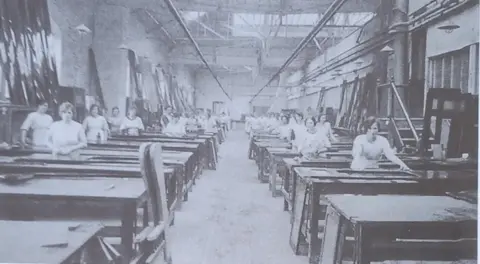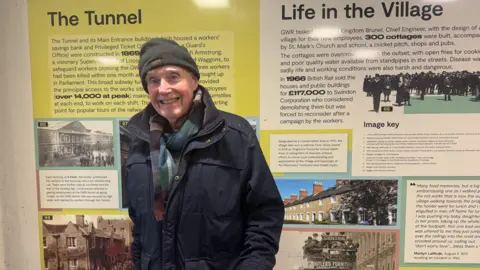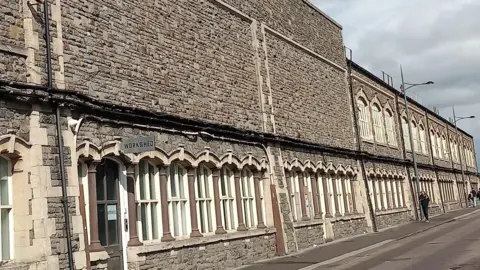Exploring the heritage of Swindon's 'Great Wall'
 British Rail
British RailA 91-year-old historian is delving into the industrial past of an imposing stone wall in the heart of Swindon.
Jack Hayward, who has lived in the Wiltshire town for most of his life, says the 150-year-old "Great Wall of Swindon" represents the "struggles of generations of families".
He said the area around the wall was transformed from greenfield into a thriving industrial hub, "creating the Swindon we have today".
Mr Hayward is hosting an event in the town on 6 February to share his research.
The wall was built around Great Western Railway's Carriage Works factory to protect workers from the busy and dangerous Bristol to London railway line.
The once-bustling works were a key site during the town's expansion in the Victorian era.
 British Rail
British RailThe workshops produced everything from locomotives, including the soft furnishings and woodwork for the interiors, to artificial limbs for injured rail workers.
Joseph Armstrong, GWR's locomotive superintendent from 1864 until his death in 1877, was responsible for the construction of the Carriage Works.
He was not just an exceptional engineer but also a progressive leader who played a pivotal role in improving working conditions.
As part of his construction efforts, the wall was built between 1868 and 1876, running from Rodbourne Road to the train station.

Mr Hayward is a former clerical officer at the workshops. He argues that the wall is a symbol of the town's industrial heritage and the workers who shaped its history.
"It represents the struggles of generations of Swindon families who played out their abject lives living and working in an industrial environment in the second half of the industrial revolution," he said.
 Jack Hayward
Jack Hayward"[The families] were not privileged with the benefits of a modern society that we enjoy today. They had to carve out of the community they had created, the structures of governance to give themselves health, education and social facilities so that they could improve their quality of life.
"I think they are worth remembering, and as long as the Great Wall stands it will be their reminder."
Mr Hayward's talk is being held with Swindon Heritage Preservation trust at the Central Community Centre in Swindon at 18:00 GMT on 6 February.
Follow BBC Wiltshire on Facebook, X and Instagram. Send your story ideas to us on email or via WhatsApp on 0800 313 4630.
